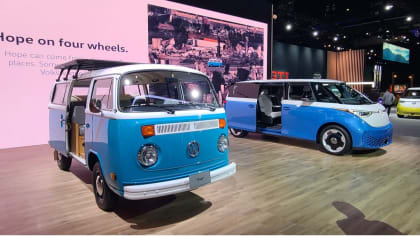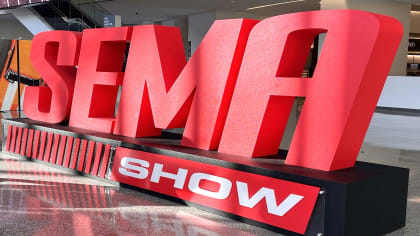Marek Djordjevic Discusses Design
Published on Mon, Mar 13, 2006
By: John Grafman
The second and final installment of the LA Car interview with automotive designer Marek Djordjevic.

In August of 2005, Marek Djordevic left Rolls-Royce to establish Marek Djordjevic, Inc., an independent strategic design and luxury brand development agency. The move marks an end to his fifteen years with the BMW Group, where he worked on concept and production BMWs, as well as MINI, MG and Rover models during BMWs ownership of Rover Group. He ultimately rose to Head of Exterior Design at Rolls-Royce Motor Cars, and Creative Director of DesignworksUSA. His legacy: The Rolls-Royce Phantom as well as the delicious 100EX and 101EX concepts, which will spawn the next Corniche in 2007.
On a beautiful sunny and warm day, LA Car's Zoran Segina and John Grafman sat with Marek Djordjevic to discuss his past, his present and – above all – his future.
LA Car: How did you get involved with the Rolls Royce?
Marek Djordjevic: A very interesting transition of stewardship happened there. At the time, there was a bidding war between the BMW Group and Volkswagen. Exciting times, indeed. Even Mercedes was rumored to be involved briefly at the outset when the two brands (Rolls Royce and Bentley) became available for sale.
Once I was confident that BMW has secured the rights to the Rolls-Royce marque, which happened in the summer of 1998, I jumped at the opportunity to put some thoughts together about how we should proceed with the design and development of the new car. And it was a fortuitous timing, because by the time of the product development meeting with Dr. Reitzle in the early fall of 1998 I had already put together a basic plan describing the 'who, what, how, where and when' of the process which would take us to the final design of the product. I was fortunate that the proposal was favorably received, and spent the rest of the year detailing the plan with some of the colleagues who were going to be involved with the project.
The program was to commence the following year and it called for pooling the best resources available among the three studios at the time – Munich, California, and the Rover Group studios (BMW owned the Rover Group at the time). The plan also called for the creation of a temporary design studio in London, a setting of obvious choice for the activities to come. Everybody on the project was ready to get completely immersed in it with a great deal of intensity and dedication.
In early 1999, we found an excellent location right on the Bayswater Road near Lancaster Gate, on the North Side of Hyde Park. Put simply, it was a fantastic place in terms of the needed exposure. One could step outside with a cup of tea, spend there five minutes sipping and watching at least one or two, if not three, Rolls-Royce cars driving by.

After The BMW and VW Deal
LA Car: After BMW and Volkswagen brokered the deal to divide up Rolls Royce and Bentley, didn't this leave BMW without a famility to build the car? The deal called for Volkswagen to acquire all the physical assets.
Marek Dordjevic: I believe it would have been the case anyway. London is such a natural habitat for the car we were working to create and provided an excellent home base from which we could explore this historic marque's culture. It was also a superb environment in which we could get to know the customer. We explored a wide variety of activities designed to familiarize us with the lifestyle and the kind of likes and dislikes of the type of customer who would be interested in the product.
During the course of this process we visited superyacht builders like the Pendennis shipyard in Cornwall, went to see the races at Ascot, a classic motorboat show at Lake Windemere, traveled to the Formula 1 Grand Prix races in Monaco and Silverstone, and attended a variety of concerts and other events. We also had the pleasure of visiting various social clubs in London, including the Travellers' Club in Pall Mall and the Hurlingham Club during the famous Louis Vuitton Concourse d' Elegance. I was actually hoping to broaden our research internationally and talk to some of the long-standing customers worldwide, but we simply ended up running out of time.
Our research was conducted simultaneously with putting some of the early thoughts down on paper – drawings and sketches and so forth. At the same time, we kept a very close working relationship with the engineers in terms of setting up the initial concept of what should the architecture of this car be – the layout, the engineering package. This is where some of the very fundamental things such as the body-on-frame design, wheel size, and the overall dimensions got set into stone. This process was very important in getting the kind of proportions that we have ultimately achieved. I was convinced from early on that the name of the game was getting the dramatic proportions and the right 'presence' that would really represent the brand well.

A New Chapter
LA Car: Seven years later, you are starting from scratch establishing Marek
Djordjevic, Inc. Exhilarating? Terrifying?
Marek Djordjevic: Very satisfying. It is one of those things where you think, “Why didn't I do this earlier?” But in a sense, it was necessary to wait until the time was right. I think it's important to have a great deal of drive and motivation to strike on your own. But it should be combined with a well-balanced background in terms of experience – namely what you have accomplished within the industry prior to that. And I believe that what I have is the right balance of the two. I also waited for the right time in the development of the projects within the company, because by no means would I want to leave my former colleagues in any kind of a difficult situation, where my departure would cause any problems.
LA Car: One of the landmarks of this development is the Rolls Royce convertible which you showed at the Art Institute Center for Design in Pasadena. Tell us about it.
Marek Djordjevic: That car is now finished as far as the design is concerned and just a remainder of the testing program has to be completed before the car comes to the market in 2007. That was an important point I wanted to make – that my involvement was finished with this job. And there was also enough staff in place to rely upon once I am gone.
But what also gave me the confidence and opened my eyes to the opportunity at hand was the fact that, over the years I've spent with Rolls-Royce, I had great luck in getting the kind of experience that designers rarely get. This stems from the fact that I was a member of a very strong team that allowed me to be involved in the corporate activities all the way up to the chairman's level. You could find me in the corporate boardroom discussing the future product line of the company, the strategies regarding corporate communications to the market, as well as the launches of the vehicles. A designer typically never comes anywhere near these sorts of things in the automotive world. That was a great knowledge and skill-broadening experience.
I also had a great deal of exposure to the dealers and the customers when I participated in the pre-launch marketing efforts we called “closed room” events. After BMW Group acquired the rights to Rolls-Royce Motor Cars, we subsequently licensed the rights to Volkswagen in order to have them maintain the brand and sales of the current models until we were ready with our new car and the manufacturing facility. Under our agreement we would not publicly market the new Phantom until January 1, 2003.
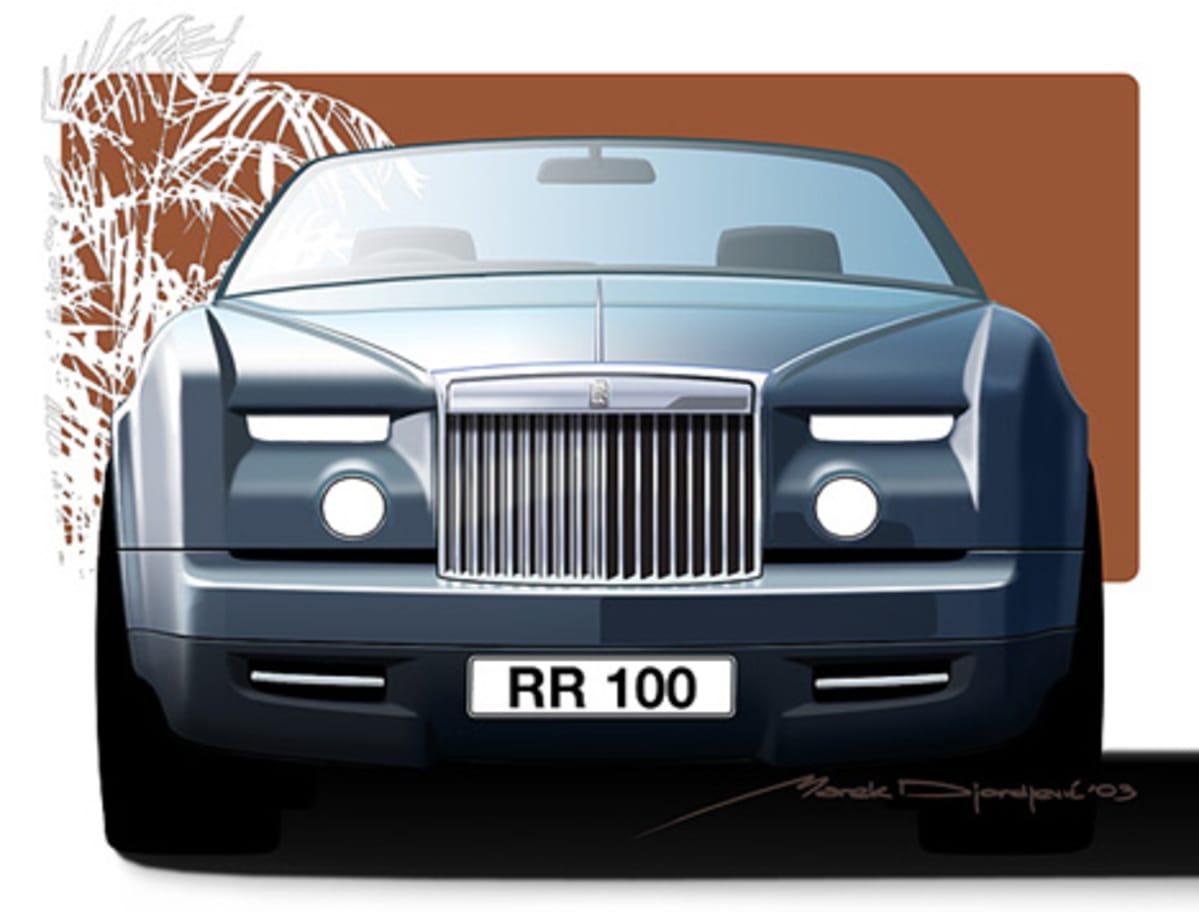
The contract allowed, however, for us to set up discreet environments where dealers could bring potential customers to preview the product before it became public on January 1, 2003. These guarded, confidential presentation spaces were located in nondescript buildings throughout the world. I was personally responsible for conducting these presentations on one-on-one basis to the potential customers in Florida, California, Hong Kong and Tokyo. And this was an incredible experience, absolutely amazing.
A scenario was created where the dealer would bring in an individual customer to our location. We would show them the model of the factory that was under construction at the time, and have them sign a non-disclosure agreement. Then, the customer would be invited into a conference room where I would give them a presentation recounting the story behind the design and development of the new car together with the historical references and context. This was followed by a visit into another space set up like a showroom with the pre-production prototype of the Phantom, positioned on a turntable, under a column of veil.
There was a choreographed reveal sequence – very magical indeed. We would bring the customer in a dark room with just one big candle on a pedestal at the end. The reveal sequence would begin with music and the car rotating under the gentle spots of light gradually building up into a crescendo with the car finally being shown in its full glory. This was incredibly unique as it gave the customers an opportunity to see the car firsthand, without even seeing any spy-pictures previously – and to be shown the car by somebody so closely involved in its creation.
For me the process was enormously beneficial because I could observe how the customers reacted to what they saw. Do they see the messages we have put in? Do they read what we write? What they notice first, and how they perceive it? It was absolutely amazing. It also provided me with another level of experience where I had a chance to act as a de facto salesman of the car. I would take the customers around the car, explaining everything, and the dealer representative would hang in the back, with the folded piece of paper that required signatures not for taking the deposit, but reserving the production slot. And it worked brilliantly. It was fantastic, not only to get to know the customer, but to learn the variations in the tastes and desires between Florida and California, or from the United States to the Far East. And then again, in the Far East, from Hong Kong to Tokyo. It was priceless.
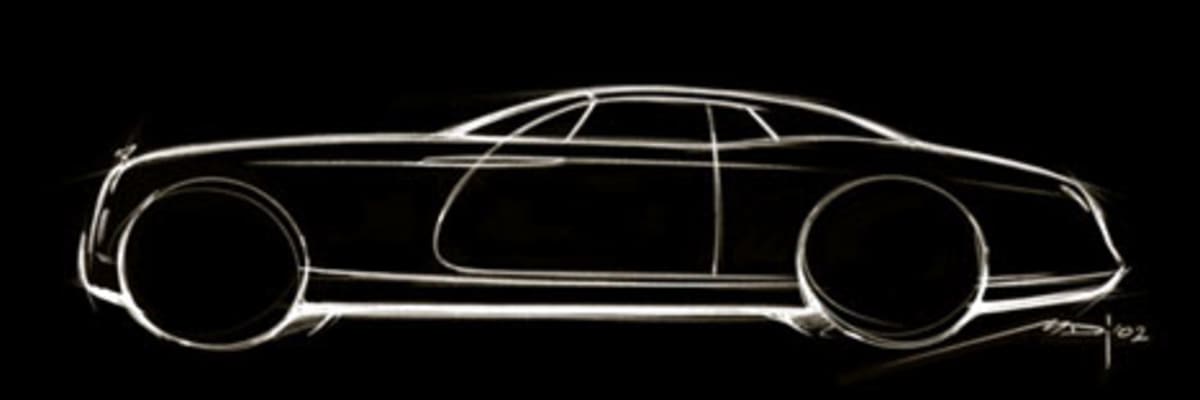
Interesting Tidbits
LA Car: Marek Djordjevic Inc. carries corporate description, “land air sea design.” You seem to be striving to include the design for all three modes of transportation.
Marek Djordjevic: I arrived at this point foremost because of my passion for all three fields and modes of movement. I joke sometimes that this is just a ploy so that I can make my pilot's license course tax deductible. Part of the inspiration came from the history of Rolls-Royce. A little known fact is that Rolls-Royce used to hold speed records in all three modes of transportation.
LA Car: There were, for example, Rolls Royce Merlin engines on the Spitfires during the World War II.
Marek Djordjevic: It was actually the type R engine that brought the fame of the three speed records. So this reflects a great deal on the heritage of the company, involving – in the broader sense – the transportation movement and the human achievement. In my dealings with the customers I have come across a lot of people own two, if not all three types of vehicles – a boat, a car and a plane. And there is a great deal of interest in this demographic segment to have something very special and unique. Lots of people who like what we did on the Phantom, who are inspired by that design, would like something similar on their boats and planes. Therefore, I found a wonderful opportunity to satisfy some of my passion in this regard as well.
LA Car: Are we moving from mass-produced cars for large audiences to a one-off, be it a car, or a boat, or a plane, where a customer could buy a platform and have the designer create something the customer would like?.
Marek Djordjevic: I think it is difficult to predict that. There is some movement, but on a couple of different levels. My involvement with such an arrangement will not constitute the vast majority of the business. I certainly do see satisfying some of the demand, but do not see this being the norm.
Let's look at commissioning boats, for example. Even when you build a custom boat, people tend to exercise a level of self-restraint so that they will be able to resell that boat after a few years before they move to the next level. To make the resale easier, a customer will often shy away from some of the more radical individualism. It will certainly be there but not in the terribly great numbers.
I also think that you will see some of it happen in the higher segments – probably even higher than what Henrik (Fisker) is doing. This is the area where there is less choice available to the customers. Not only do these customers have the means to finance something as a custom car, but they also have more need because there is just simply less choice of what is available.
In anything below the $300,000.00 mark, you find a lot of customers for whom this is a reward purchase, a self-reward. Usually it is a purchase of a car, or at least a brand of which the customer has been dreaming, or aspiring to for a long time. We are yet to see how this develops. I am sure that every manufacturer seeks to make its manufacturing process more flexible to that point where they can produce and make a sound business case out of lower-volume and more individually specified cars available to customers.
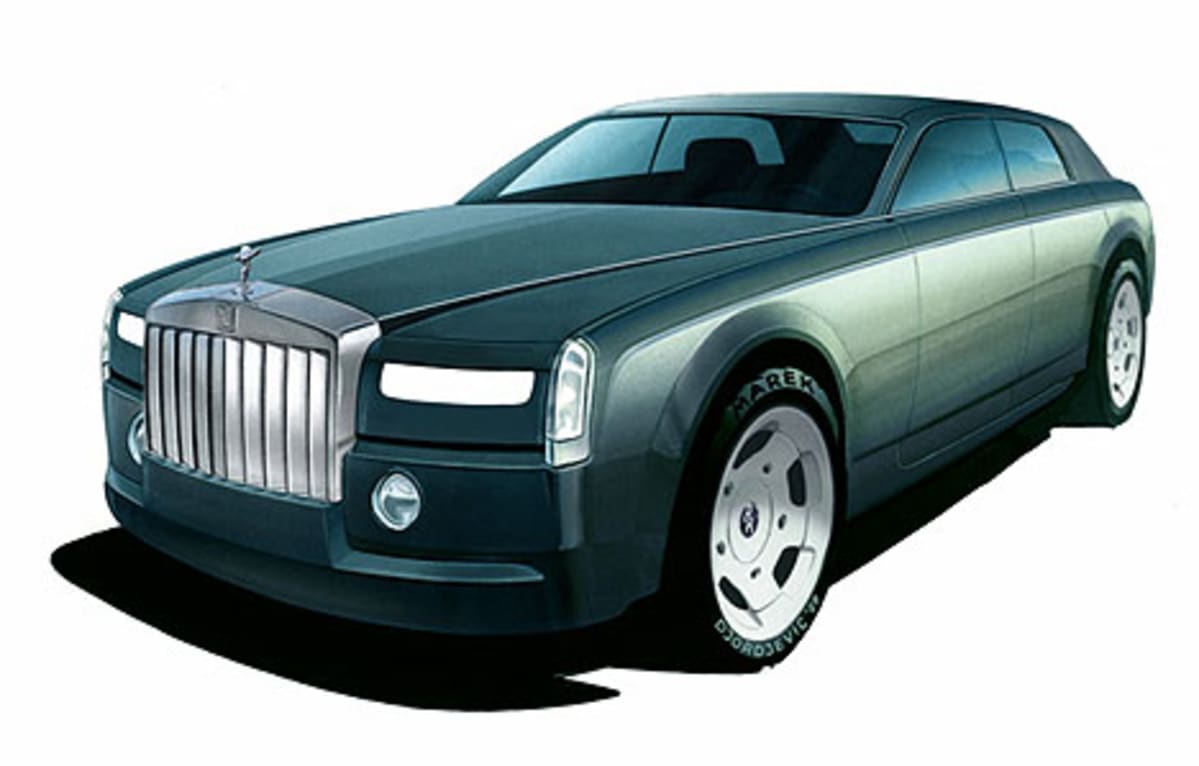
LA Car: SEMA and customization come to mind.
Marek Djordjevic: Right. It may be very, very difficult for the manufacturers to do individualization on their own, by the nature of how they are structured, organized, and run. They may wish they could individualize their products, but are actually going in the opposite direction – further away from it. There are legal and fiscal issues that prevent them from that kind of risk-taking. And then there's the speed of being able to react and answer to the demands of the customer. The aftermarket business model is much more suitable for that sort of thing.
LA Car: If all the dreams came true, and we had an ability to glance into the future of Marek
Djordjevic, Inc, five years hence, what would we see?
Marek Djordjevic: I am so excited with what I'm involved in right now. The goal will be the full fruition of my plans and things that started happening already. You would see me happily designing some of the world most exciting automobiles, yachts, and airplanes. The ultimate dream, of course, is designing and owning – and using – one of each that is completed to your own specifications. And perhaps at that time we can have an interview on that boat, fly to lunch somewhere else, fly back or even drive back to the office.
LA Car: You designed the Rolls Royce Phantom convertible, which was revealed at the Art Center in Pasadena. The car seems nautically inspired, for example, with the teak ordinarily used on the decks of sailboats and powerboat.
Marek Djordjevic: This stemmed more from a general passion for all three fields of transportation rather than some overarching plan back then. It was just another step in the progress toward the point where I am right now. Beyond just some of the elements such as the bleached teak decking and the exposed metal windscreen surround, there is an overall spirit. The car was designed with the kind of sensation of use akin to being on the yacht. This Rolls-Royce convertible is different from lot of other supercars in the segment because it is not a car designed solely for the pleasure of the driver but a car offering a kind of joy that could be shared by all the occupants. And, it is to be enjoyed in the open elements like a yacht would be.
LA Car: In the future, will you be cooperating with some of the existing car companies?
Marek Djordjevic: I already am. The services extend anywhere from bespoke design projects to advising on the progress of the design development of various programs the companies already have underway. My services also include the review assessment and counseling as to what the product portfolio is, and where it is going – its future direction. Another very big factor is brand development, especially because of my exposure to the premium and luxury brands. Also included are the activities regarding corporate communications and brand ambassadorship.
LA Car: Do you see yourself still targeting high-end products as opposed to mass-market product?
Marek Djordjevic: I do not discriminate against a mass-market product by any means. It happens that I have acquired the greatest exposure with the super-premium products – I enjoy that and I will maintain my work in that regard. I have done various products in the past, however, and am excited about doing other exciting projects in the future. Anything of a progressive nature is of interest to me.

To read the initial installment of the LA Car interview with the designer, go to Marek Djordevic.
To read LA Car‘s review of the Rolls Royce Phantom, go to Fine Art.
